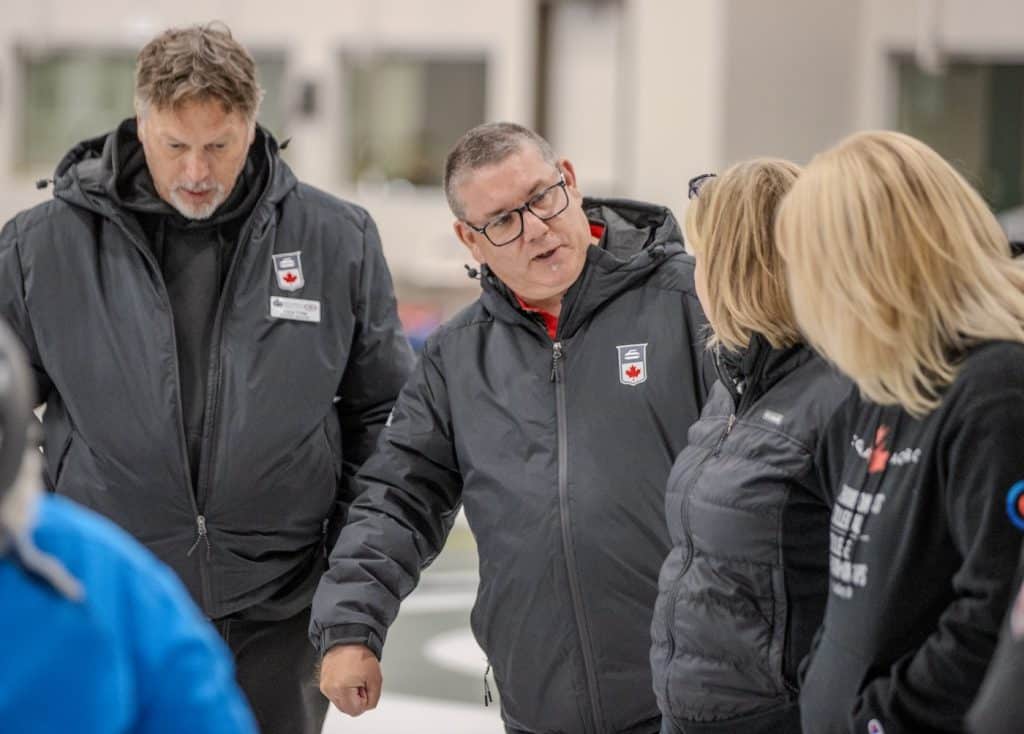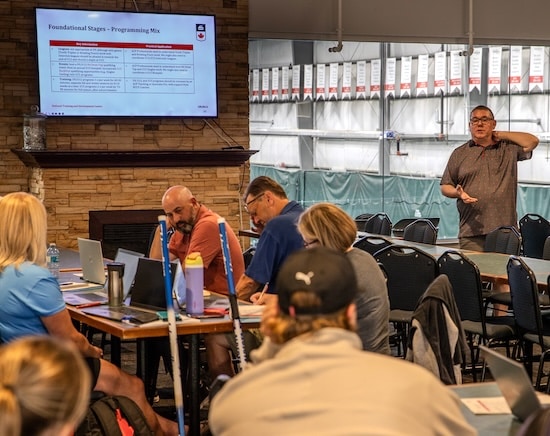Professional opportunities!

Association of Curling Professionals taking significant strides forward
By John Korobanik
It’s taken more than a decade to see the vision become reality so when Rob Krepps saw the response to the initial training camps of the newly launched Association of Curling Professionals (ACP), he couldn’t help but smile.
The recent camps held in Edmonton and Oakville, Ont., launched the ACP program that will see curling in Canada embark on a path similar to that of golf where clubs across the country will have accredited professionals, both club and teaching, on staff.
“It was beyond even our wildest expectations,” Krepps, Executive Director of the ACP, said of the camps that attracted 50 participants. “We were expecting maybe half as many people as we ended up training.
“I would say the quality of the candidates, their engagement, just how much they were leaning in, was exceptional, beyond anything we could have hoped for.”
The association offers a one-year training program that sees participants complete a series of six online courses followed by a weekend in-person training session. Completion of both segments, combined with an evaluation, earns the individual Associate Pro accreditation.
“Everybody starts with Associate Pro, a combination of the teaching side and the club management side, because we want all our pros to have a broad skillset,” said Krepps.
Those Associate Pros now have an additional year of training in either the club or teaching pro programs to become fully accredited.
Bobby Ray, Senior Manager of Club Development and Member Services for Curling Canada, says the response to the program was encouraging, “which is what I was hoping would happen.
“My particular interest has been whether there was support for the concept. Sometimes when you’re in a sport that’s been around for a long time, and operated the same way for so long, it’s tough to consider change like this. But we have a critical mass of influential people who are prepared to champion this cause now.”
Three-time Brier competitor John Epping agrees the program was long overdue and sees plenty of benefits for clubs and curling.
“This is something that one, is going to be absolutely fantastic for our recreational curlers,” he said, adding that having pros on staff should attract new young players, provide them with the instructions they need or want along the way, and also help the clubs grow.
Ray first heard of the program to take curling along a similar path as golf back in 2013 when Krepps presented the idea. When Ray assumed his current position with Curling Canada two years ago, he made it a priority to fund the program for the first couple of years “to make sure it got started.”
The hope is over time the revenue generated by the training programs and membership dues will make the ACP self-sufficient.
Like many other sports, curling is largely supported by volunteers. Other sports however, such as golf or tennis, have come to rely more on trained professionals to run their clubs and train their athletes. Ray says the inclusion of professionals “elevates the sport and gets more people to participate.

“We have always been a volunteer-led sport. I think a culture of volunteerism is going to continue, but everywhere you look volunteerism faces greater challenges. The future success of curling participation at the community level is a hybrid model with a modern volunteer strategy as well as training a generation of people who are going to work in the sport and be really professional and good at what they do.”
While curling is steeped in tradition, Krepps feels the idea of having at least one professional at every club is not far-fetched.
“Curling would benefit a lot,” he said. “It may well be an idea that is more than high time to happen, and I think it is going to make a really big difference in the health of our clubs and the health of our sport.”
That’s a thought others involved in the program agree with wholeheartedly.
Even though Epping has played in three Briers, won four Grand Slam titles, and has been teaching curling for a number of years, he took the ACP program and sees significant future benefits.
“For me, it validates some of the techniques and practices I’ve been using in my own teaching,” he says. “It’s good to see some new ideas and tactical and technical practices that I can potentially use in my own future teaching.”
One of the important aspects of the program, he says, is to standardize teaching across the country.
“Getting everybody under one teaching umbrella, with the same ideology, at least the main staples of ideology, is going to benefit not only myself but all the curlers we come across in the future. Instead of (different styles and philosophies) it’s going to be kind of universal. Not that there won’t be slight alterations here and there to incorporate your own style, but the basic theories and ideologies will be common.”
Gerry Richard, 1994 Brier and world champion as a member of the Rick Folk team, and a Level 3 coach for Curl BC, says standardizing teaching in Canada is “a real key” for future successes.
“Over the years there have been a lot of good instructors in Canada, but in ways they maybe have not always been exactly on the same page of what we’re looking for. You look at the development of some of the teams from Asia and now Scotland, they’re teaching their young players at a really young age to throw the rock in a certain way. That creates a huge advantage to be able to do that.”
One of the keys moving forward will be getting curling clubs, many of them already struggling to survive financially, to buy into the concept of having pros run their clubs and their programs.
“That’s the whole reason to do it,” Krepps said. “Curling Canada wants to build more curlers and better curlers, and I can’t think of anybody who’s going to be better equipped to do that than ACP professionals.”
Ray acknowledges some clubs will say they can’t afford to hire a professional.
“We say you can’t afford not to hire a professional because we’re going to train them to make money, and to generate a return on investment for themselves at some point. They’re going to sell such a greater volume of lessons, equipment, ice time, and memberships that a club won’t be able to afford not to have a curling pro on their staff.”




